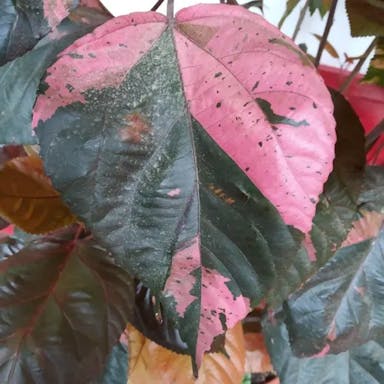Palmer's Indian Mallow, scientifically known as Abutilon palmeri, is a plant species native to the southwestern United States and northern Mexico. It belongs to the Malvaceae family and is characterized by its woody stems and velvety, heart-shaped leaves. The flowers of Abutilon palmeri are bell-shaped, typically yellow with red veining, adding a vibrant touch to gardens. The plant can grow up to 6 feet tall and is relatively easy to cultivate in well-draining soil and full sun. Abutilon palmeri produces small, round fruits that contain seeds. This species is valued for its ornamental qualities and is often used in landscaping for its attractive foliage and flowers. There are no known varieties of Abutilon palmeri, and it is primarily grown for its aesthetic appeal in gardens and landscapes.
0
0








